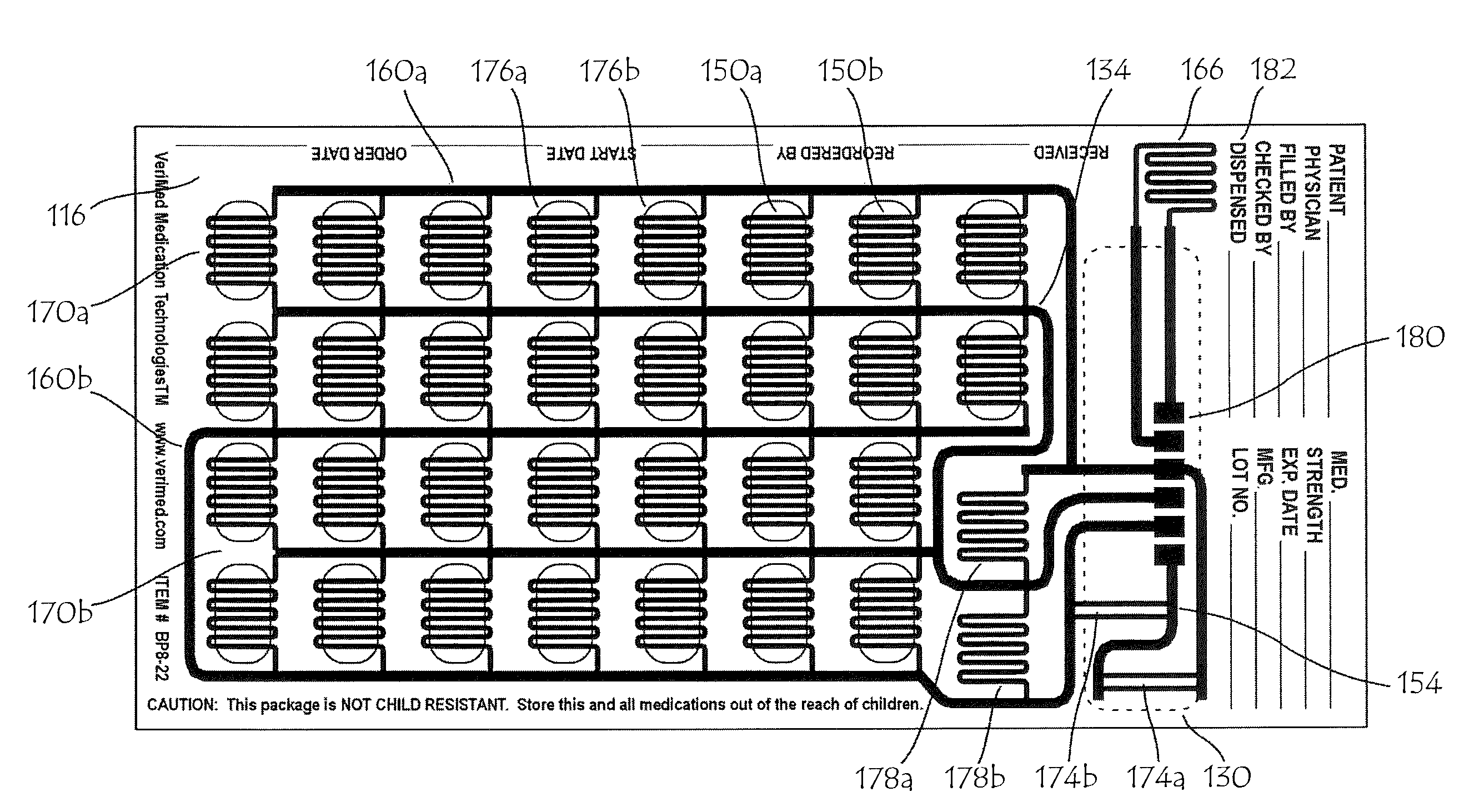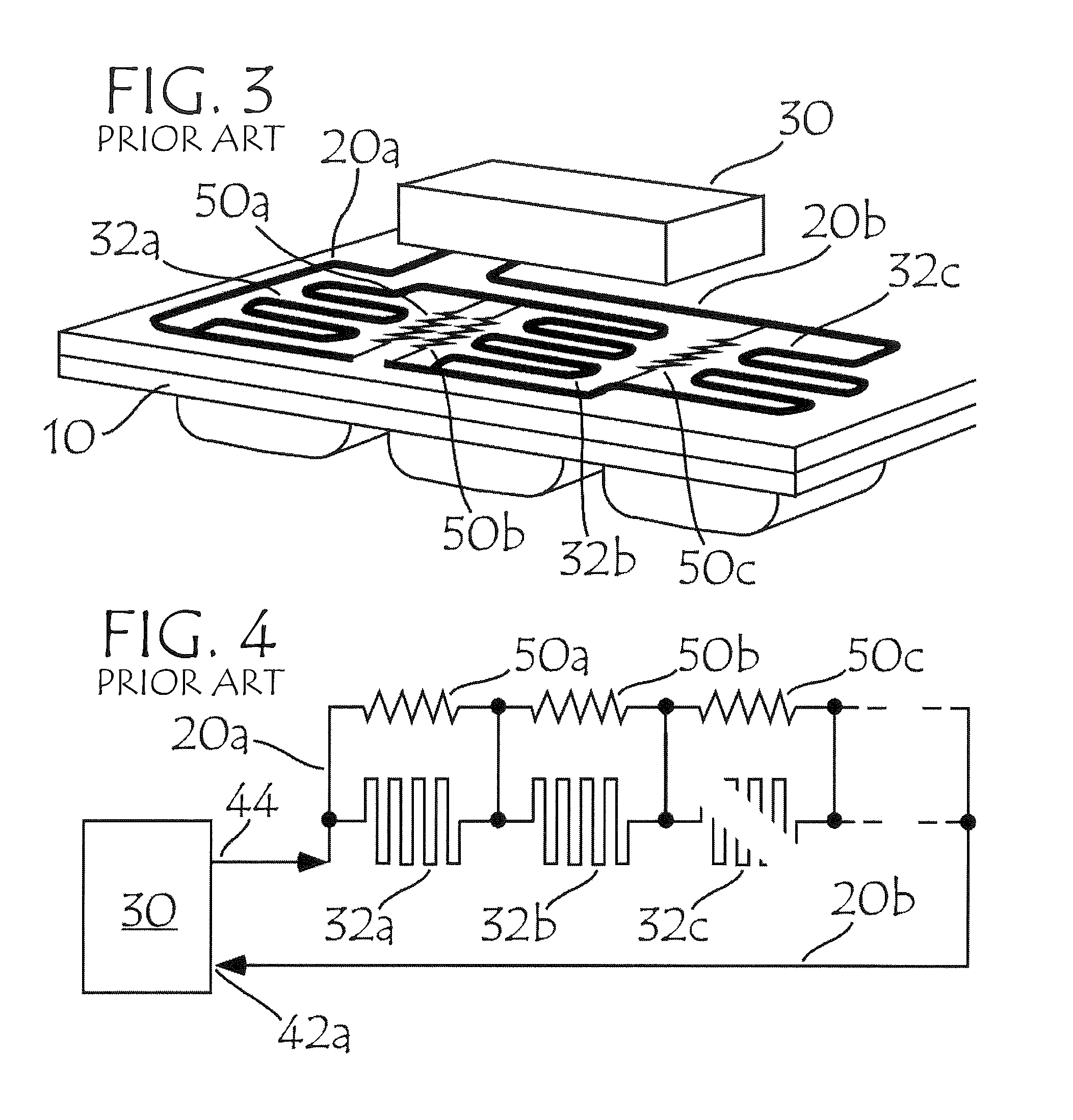Blister pack content usage monitoring
a content monitoring and content technology, applied in the field of packaging devices and electronic use monitoring systems, can solve the problems of reducing the effectiveness of a medication, increasing the frequency of errors, and outright harming the patient, so as to prolong the operating life and save battery power
- Summary
- Abstract
- Description
- Claims
- Application Information
AI Technical Summary
Benefits of technology
Problems solved by technology
Method used
Image
Examples
Embodiment Construction
[0053]The invention, shown in FIGS. 5 and 6 with a specific embodiment shown in FIGS. 7-9, overcomes the deficiencies of the known prior art through an analog approach in which (1) the plurality of spatially-extended, breakable traces behind the blisters are made from resistive, rather than highly conductive, material; (2) the traces are connected in parallel rather than in series, the parallel traces being further connected in series with one or more reference resistors; (3) traces intended to be resistive and those meant for simple interconnection are structurally and / or geometrically distinct in their construction; (4) all of the resistive traces are formed at the same time, from the same starting materials and under the same processing conditions, in a single operation and preferably with the same orientation; (5) all resistive traces have the same nominal line width; (6) the variable upon which blister opening detection is based is the ratio among two resistances, as determined...
PUM
 Login to View More
Login to View More Abstract
Description
Claims
Application Information
 Login to View More
Login to View More - R&D
- Intellectual Property
- Life Sciences
- Materials
- Tech Scout
- Unparalleled Data Quality
- Higher Quality Content
- 60% Fewer Hallucinations
Browse by: Latest US Patents, China's latest patents, Technical Efficacy Thesaurus, Application Domain, Technology Topic, Popular Technical Reports.
© 2025 PatSnap. All rights reserved.Legal|Privacy policy|Modern Slavery Act Transparency Statement|Sitemap|About US| Contact US: help@patsnap.com



